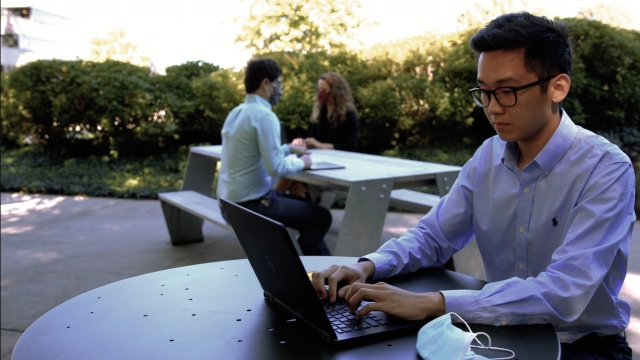Across the U.S., Americans are gearing up for a return to post-pandemic work life. It could very well look different: in an office, or fully remote, or a hybrid of some sort.
"We're going to see a wide range of solutions. There are people who are already back. There are those that are mandated to be back at the time. There are those who say I will be there infrequently and there's a wide range somewhere in between those two extremes," said Rachel Casanova, senior managing director of workplace innovation at Cushman & Wakefield.
An odd thing happened during the pandemic, turns out some people don’t need to actually be at work to keep working. And that could continue.
Mckinsey & Company found more than 20% of the workforce could work remotely just as effectively three to five days a week. The pandemic forced workers, and companies, to re-evaluate the right way to work.
"We're in a moment of transition where a lot of organizations are trying to figure out what works for them. And most organizations say they're going to adopt hybrid work, but they've never really done it before. And they're kind of trying to figure it out as they go," said Christine Congdon, global director of research communications at Steelcase.
A Steelcase global report found nearly a quarter of all businesses will continue to work primarily in the office. Only about 5% will work from home. Most will blend a few days at home and a few days at an office. Figuring it out and work flexibility seems to be the theme as COVID-19 mandates change and new variants appear. And as Casanova points out, there is no one work solution that fits all.
"What we're expecting to find is chaos. This is hard. This is how do you satisfy the business need, the fairness and also the individual ask of what I want," said Casanova.
Both Casanova and Congdon work in companies that create office spaces and products for businesses. And they both predict that those partitions, socially distanced desks, and stickers will soon disappear.
"What we're seeing is a shift as organizations are recognizing, as vaccines are far more widespread, there's less of an emphasis on distancing or division and separation and more of an emphasis on what kind of experience do we want to create for people when they come back to the office," says Congdon.
A Kastle Systems survey found only about one-third of workers are back in the office. When it comes to large cities, San Francisco and New York have the lowest occupancy, at 18 and 20 percent—even with these small numbers, it is slowly increasing. In Chicago this week, the regional rail line began adding back trains to downtown.
"People are looking to get back in the office," said Haniel J. Lynn, CEO of security firm, Kastle Systems. "You're seeing that in the trend lines. As people start to get more comfortable, as they start getting vaccinated, they are able to get back into the office. They just want to be there."
"It's really hard to predict. Will people come back as we think they will," questions Casanova."So we're watching to see what behaviors we need to support."
Those folks returning to the office will see some changes, like touchless access that uses cell phones to enter buildings or call elevators.
"When you think about some of the nature of those kinds of features, they become just a better experience when you are engaging with the office," says Lynn.
This story originally reported by Cat Sandoval on Newsy.com.



